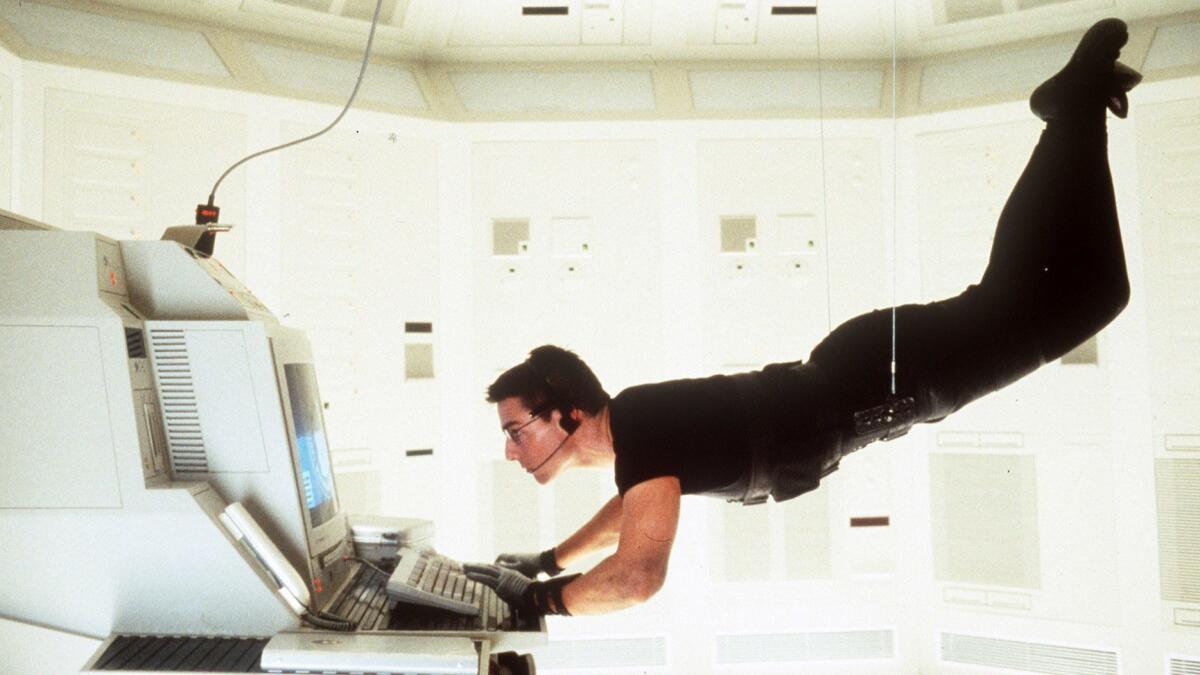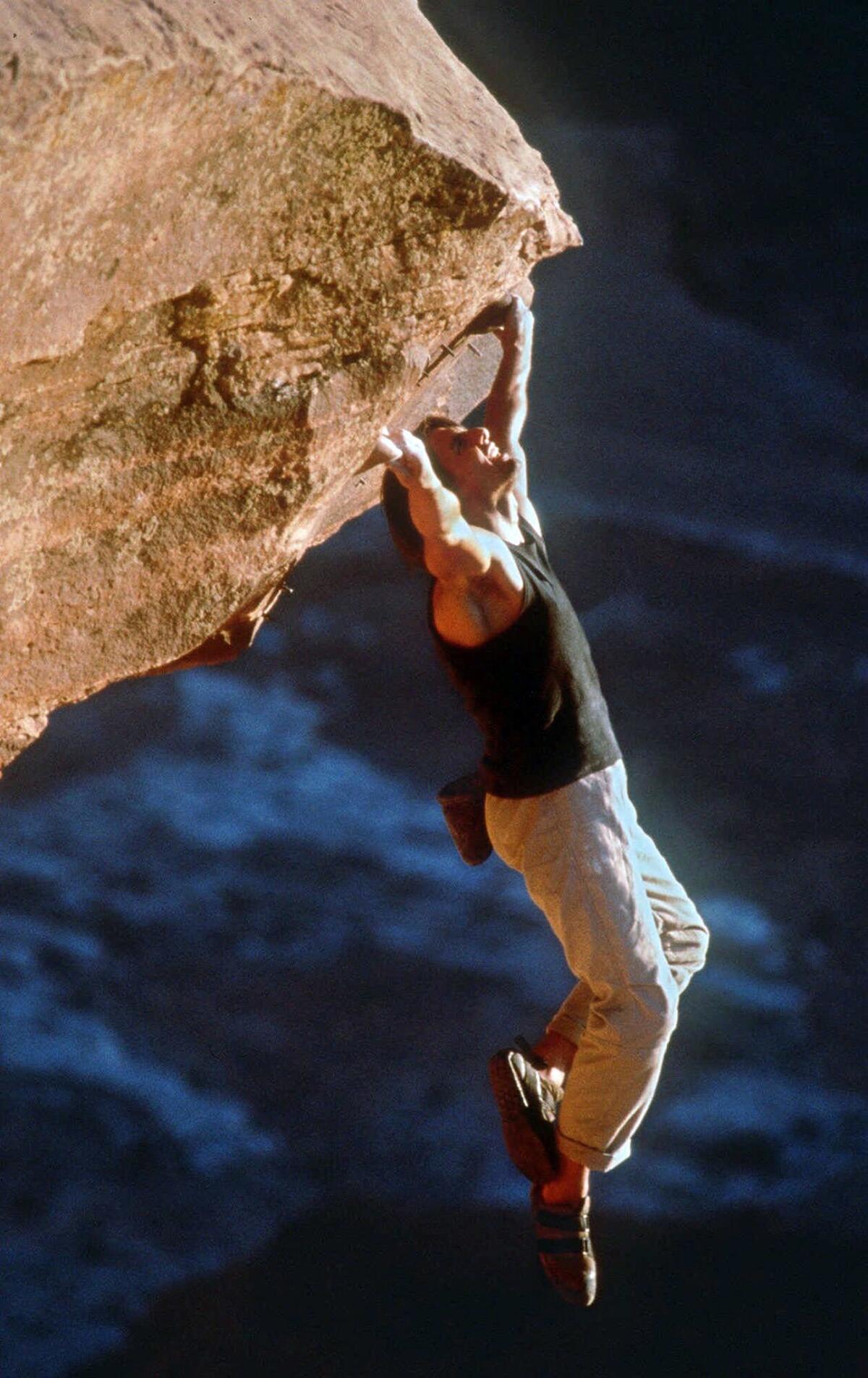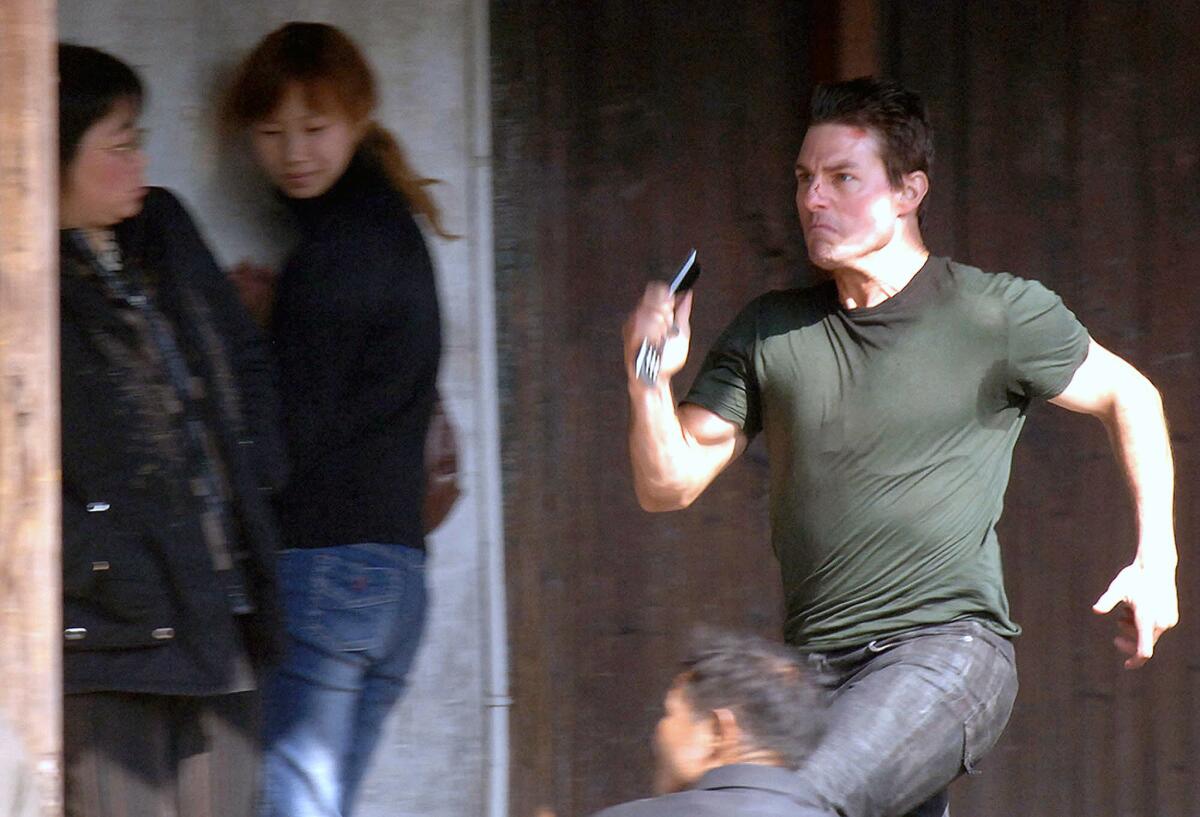Here comes ‘Mission Impossible: Fallout,’ so how do the first 5 films stack up?
This week’s release of "Mission Impossible: Fallout" marks the return of Hollywood's most consistently breathtaking action franchise. The previous films have different directors, central characters, emotional tenors and politics — insofar as they exist as a cohesive unit, they’re held together by the charisma and daredevil athleticism of star (and producer) Tom Cruise.
Cruise was already one of the world's dominant movie stars by the time the first "Mission: Impossible" premiered, but it seems increasingly likely that the series is the thing he'll be best remembered for.
Originally based on a formulaic late-’60s CBS show, the movie franchise is dependent on incomprehensible plots (in which the fate of the world is generally at stake), thrilling and elaborate heists, absurdist high-tech gadgetry and eclectic, far-flung international locales. The “M:I” films take tropes and clichés from Hitchcock and James Bond and deploy them to playful extremes, always in service of Cruise’s durable gifts.
There’s something almost comical about treating the “Mission: Impossible” franchise – and the life of its protagonist, Ethan Hunt of the top-secret Impossible Missions Force – as a linear connected narrative, but watching the films in order offers a rich array of cinematic pleasures.
Here’s a look at the first five films in the “M.I.” franchise. We rank them from top to bottom.
Mission: Impossible (1996)

Ranking: No. 2
The series’ brand of sophistication and silliness was first established by director Brian De Palma, who introduces the IMF squad as a confident, fully-formed entity, and then kills off half the team (including Emilio Estevez and Kristin Scott Thomas) during a failed mission in Prague in the first half-hour. It’s an elegant, precisely engineered heist thriller, suffused with post-Cold War intrigue, that orients itself around a handful of unforgettable set pieces. The Langley break-in (with Cruise suspended by a thin wire in a highly sensitive CIA vault) is a work of impeccable choreography – the rare action movie sequence defined by silence and stillness as much as movement – and the climactic helicopter-in-a-train-tunnel chase is a marvel of classical technique. Like many De Palma films, it could be considered a self-conscious movie about movies, but it’s less interested in subversiveness than suspense. (It also has one of the funniest depictions of early internet usage I’ve ever seen.)
Mission: Impossible II (2000)

Ranking: No. 5
The biggest box-office smash of 2000, the first “M:I” sequel has since acquired a reputation as the series’ weakest link. Following Ethan Hunt’s pursuit of the deadly Chimera virus, director John Woo trades De Palma’s pulpy precision for overheated bombast – this is the one with slow-motion gunplay, doves and motorcycle jousting. Woo’s film also takes the franchise’s trademark mask-removal gag to particularly absurd ends. “M:I 2” is still ridiculously entertaining, and Thandie Newton is a welcome addition as the love interest of both Ethan and rogue agent Sean Ambrose (Dougray Scott), but ultimately Woo steers away from the franchise’s body-centered stunt work to turn Cruise into a leather-jacketed, long-haired “Hard Boiled”-style icon of cool. It makes sense until it doesn’t.
Mission: Impossible III (2006)

Ranking: No. 4
Realism isn’t a word normally associated with “Mission: Impossible,” but J.J. Abrams’ entry in the series (as well as his first feature film) attempts to ground Ethan Hunt’s covert operations in a realm of recognizable human stakes. Here, Ethan has a wife (Michelle Monaghan), a suburban home, a cover story about working with the Department of Transportation and a sense of palpable anguish. The film, which opens with a pre-credit sequence in which Hunt and his wife are threatened with torture by a sadistic arms dealer (Philip Seymour Hoffman, the nastiest and best “Mission: Impossible” villain so far), also gestures toward political developments outside the series’ cartoon universe. In an equally disturbing later scene, an emotionally unstable Hunt returns the favor by threatening to drop Hoffman’s villain from a plane. Abrams’ entry is sometimes strained and maudlin, and it earned less than its predecessors at the box office, but it’s an admirable series reset with a couple of sequences – the Vatican heist and the Shanghai skyscraper leap – that expand the parameters of what Cruise could pull off.
Mission: Impossible — Ghost Protocol (2011)

Ranking: No. 1
Pixar auteur Brad Bird (“The Incredibles,” “Ratatouille”) was tapped to direct his first live-action feature, and the result is the jewel of the “M:I” franchise. Starring a visibly maturing Cruise, who was pushing 50, and focused on an attempt to retrieve nuclear launch codes, “Ghost Protocol” combines the rule-breaking spectacle of a “Looney Tunes” episode with a decidedly grown-up fixation on the fragility of the human body. Shaking off the weight of the previous film’s darkness, “Ghost Protocol” gives the IMF another makeover, introducing team members played by Simon Pegg and Jeremy Renner, plus a cameo by squad standby Ving Rhames.
In the film’s most staggering sequence, Cruise scales the surface of Dubai’s Burj Khalifa, tethered to the world’s tallest building by no more than a pair of battery-powered adhesive gloves. No amount of post-production work can mask the seamlessness of the death-defying feat – Cruise really seems to be doing the stunt entirely on his own. “Ghost Protocol” is the film in which Cruise seems most fully committed; though it is goofier and more self-referential than its predecessors, its star seems to be working with a renewed intensity.
What initially seems like a shot-in-the-arm franchise reboot eventually ends with a surprising investment in series continuity. The film nods to the idea of Hunt being a three-dimensional character, but knows the audience prefers to see him deployed as a well-oiled machine.
Mission: Impossible — Rogue Nation (2015)

Ranking: No. 3
Though switching directors yet again – to “Usual Suspects” scribe Christopher McQuarrie – “Rogue Nation” is the first film in the franchise to follow its predecessor’s model without a significant overhaul. Working alongside his most recent IMF lineup, Hunt attempts to locate and eradicate a shadowy organization known as the Syndicate. McQuarrie’s film pays tribute to previous series triumphs: the cargo-plane stunt gives Cruise another death- and CGI-defying feat of lunatic proficiency, and the central Vienna State Opera assassination attempt is a laudable attempt at De Palma-esque single-site spatial choreography.
“Rogue Nation” also gives the series its first marquee-ready female character, the double-or-triple-agent Ilsa Faust, played by Swedish actress Rebecca Ferguson. Just as Ethan is beginning to seem less infallible, the series has introduced an action hero who can save his butt. Ferguson is returning for “Fallout,” and if Cruise ever decides to take a stunt a little too far – he reportedly did break his ankle on the “Fallout” set – “Mission: Impossible” (and the IMF) finally has a potential stand-in ready to report for duty.
Only good movies
Get the Indie Focus newsletter, Mark Olsen's weekly guide to the world of cinema.
You may occasionally receive promotional content from the Los Angeles Times.



